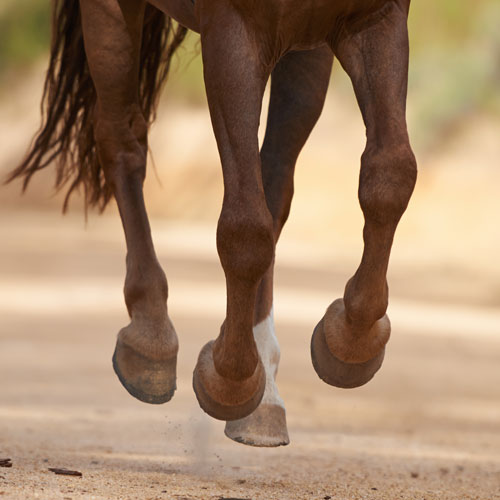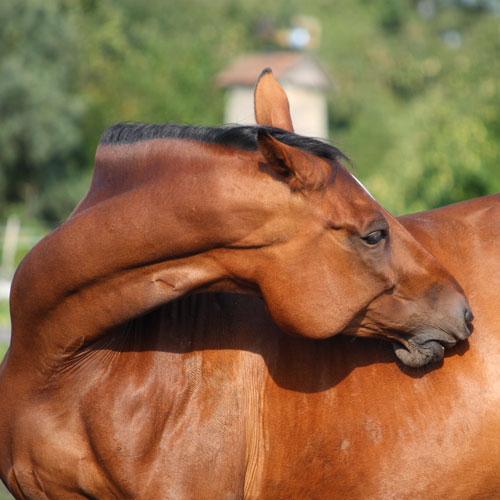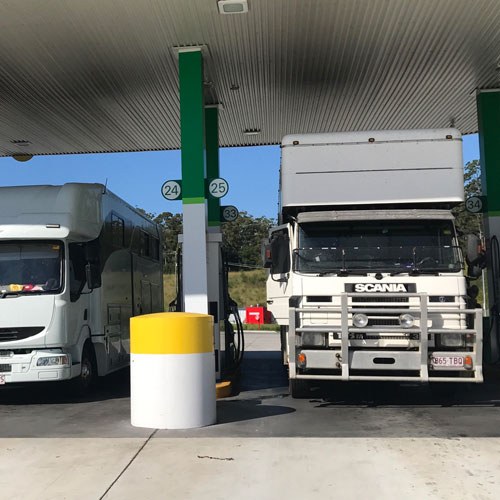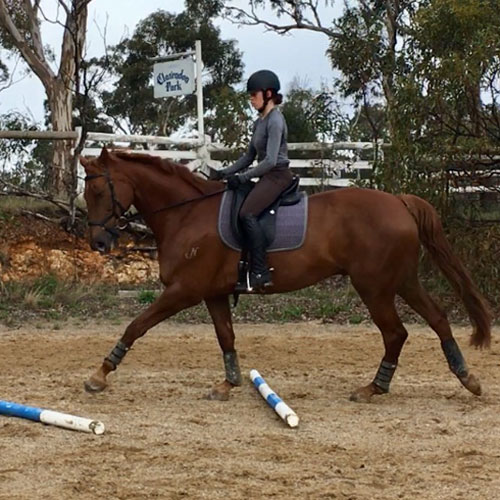5 Tips - Travelling long distances with a horse
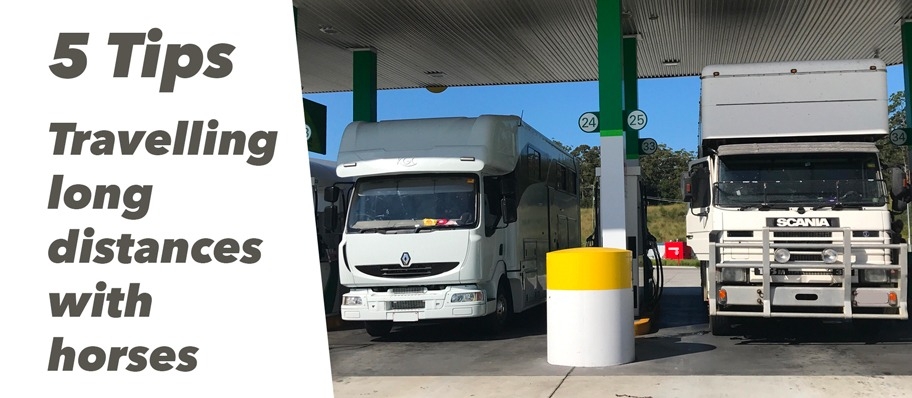
5 Tips to help you and your horse on your maiden voyage
Tip 1 - Preparing the horse for a long journey
The horse needs to be well before travelling. It can help your horse if, two weeks prior to the planned trip, you commence feeding a probiotic like Protexin and an immune booster like Kohnkes Activ-8.
If your horse shows any signs of respiratory illness or high temperatures prior to travelling, seek veterinary advice before setting out on your trip. It's ideal to monitor and record your horses temperature in the week leading up to leaving. Horses should be well hydrated and supplemented with electrolytes. Make sure you have some on board and if your horse could be fussy with water, teach him to drink molasses water or KER Drink-Up. My personal preferance is to use Recharge orally over the tongue when we stop to give the horses breaks and also when we reach the final destination.
Tip 2 - Planning the journey (stop overs..)
Check your states requirements. If travelling from Queensland tick area, the horses must be sprayed/ inspected before going into NSW. SA and TAS also have strict rules about taking hay and grains across the border and into their state. So know what you can take and plan to have feed and hay delivered to the competition venue. Some helpful links are below.
Plan your trip well in advance. Break it down into days and plan to stick on major highways. Showground's or horse BnB's are great stopovers. Always ring weeks in advance to book yards or stables and powered camping. Most good Showground's also have hot showers. If you have a full day of driving, you must take the horses off halfway at a safe location for at least an hour. So plan a location with fresh water, some shade or shelter and that's safely away from the main road. Showground's again are a good option for resting.
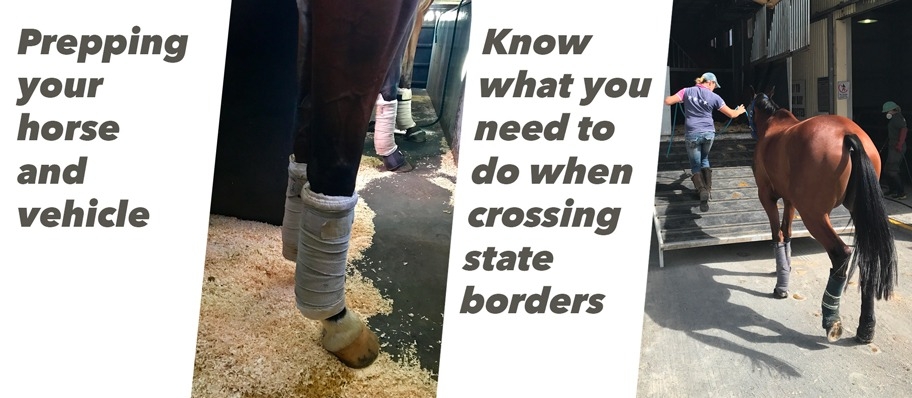
Tip 3 - Prepping the float / car / truck
On longer interstate trips I prefer to travel the horses on a truck, understandably this isn't always the case, however the vehicle should be serviced and checked before leaving. Tyres and tyre pressure adjusted and lights checked. Try not to leave it to the last minute to refuel as particularly at night, service stations can be hard to come by. Have a fully charged phone in case of an emergency and a 20lt water drum with fresh water. Shavings near the horses hind legs will capture urine and feaces and keeping it to the rear will prevent dust from around the horses head.
Try to travel in convoy or meet up in common stops. Big truck stops on the highway are great for refuelling and a bite to eat. If possible, try to rotate drivers with other experienced truck or float drivers.
If travelling a horse with a transport company, use a reputable one, check out the recommendations and make sure you have all the contact details and vise versa. Ask where the planned stops are and expected arrival times.
Tip 4 - Travelling the horse : what to do when you stop (time, hydrate)
Generally we travel the horses with no rugs. Boots and bandages can slip and cause more distress if not fitted correctly. Ideally trial what you plan to use on shorter trips first. I used travel bandages with pillow wraps, however only bandage if you are experienced, otherwise there is some great travel boots on the market. You may also decide to tail wrap with a bandage or neoprene wrap, again be careful of fit, a loose wrap falling off might upset your horse and a tight tail bandage could cause more harm than good.
Rests are extremely important for the horse. After several hours of travelling, it's important to get the horses heads down to clear the nasal cavity and sinus. Horses naturally have their heads down grazing, clearing any dust and bacteria. When they travel, we take away that ability. When we get them off, take them for a gentle walk and a pick of grass. The horse should be offered clean water and enticed to put it's head down. This is also a good chance to give them some electrolytes and check their temperature. We try to give them an hour and usually eat some lunch at the same time! On a side note, we never travel with hay bags, it's safest to wait till they are off the transport to offer hay or feed and preferably on the ground.
In the case of travelling horses to and from Tasmania, the same general guidelines apply. When returning to the float or truck check the horses immediately. Then have a planned stop close to Melbourne/ Devonport to get the horses off and their heads down asap. At every break check your horses temperature.
Remember they are better to be cool than too hot so try to travel them with no rugs.
Tip 5 - Horse Welfare : Signs of distress/ illness
Travel sickness can develop quickly and be fatal. Any signs of high temperatures require immediate veterinary attention. Travel sickness is a term given to a build up of bacteria in the airways and lungs. This can turn into pluerisy/ pneumonia very rapidly.
Westvets.com.au have a good article explaining travel sickness and it's worth familiarising yourself with its symptoms.
The horses welfare should always come first. You should always carry a thermometer and continue to check your horses temperature for a week following long distance travel.
Safe Travels, Kate
Some useful links:
Authors Bio : Kate Dreverman (Rogers) has been a sponsored rider of Herdz since 2012. Kate is a Queensland based International *** Event Rider who regularly competes at major events across the eastern states of Australia including the Adelaide International. Her most recent major success was winning the Aquis Racehorse Retraining Triequithon - 2017 with Global Victory.
Follow Kate Dreveman on Facebook

